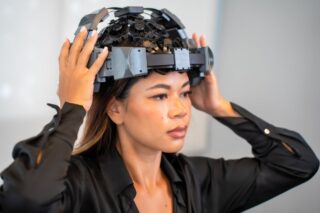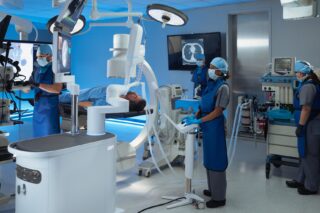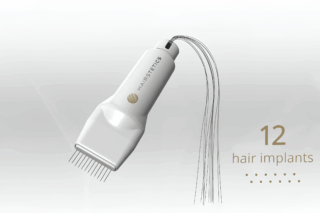During the OTO EXPO event in Flordia, a round table discussed the topic of gender-affirming surgery in general practice. Here’s what you need to know.
Key Highlights:
- Anatomical Differences Matter: Gender-affirming facial surgeries target key anatomical differences between male and female skeletons, such as the brow, nose, and jawline.
- Inclusive Terminology is Essential: Using the correct gender-inclusive language and pronouns is crucial in transgender care to avoid triggering gender dysphoria.
- WPATH Guidelines Guide Insurance Approvals: Following the World Professional Association for Transgender Health (WPATH) criteria is essential for obtaining insurance approval for gender-affirming surgeries.
- Virtual Surgical Planning (VSP) Improves Outcomes: VSP technology allows surgeons to plan surgeries with precision, reducing operating time and enhancing patient satisfaction.
A Panel of General Medical Practitioners Discuss Gender-affirming Surgery
At the OTO EXPO event in Florida, a pivotal round-table discussion brought attention to the growing role of gender-affirming surgery in general medical practice. Led by Jeffrey C. Teixeira, MD, the panel explored essential aspects of facial feminization procedures, the importance of inclusive terminology, and the challenges faced in obtaining insurance coverage for these life-changing surgeries. The conversation underscored the need for general practitioners to be better informed as the demand for gender-affirming care rises.
The panel spoke of significant anatomical differences between male and female facial structures. This guides procedures like forehead contouring, rhinoplasty, and jawline reduction. These surgeries aim to align a patient’s physical appearance with their gender identity, reducing gender dysphoria and improving psychological well-being. Advances in technology, such as virtual surgical planning (VSP), are transforming the precision and outcomes of these surgeries, making the process more personalized and efficient.
The round table also tackled the complexities of navigating insurance approvals for gender-affirming procedures, with panelists highlighting the critical role of the World Professional Association for Transgender Health (WPATH) guidelines. As more insurance providers begin covering these surgeries, detailed medical documentation and inclusive healthcare practices are becoming vital to ensuring transgender and nonbinary patients can access the care they need.
Anatomical Differences in Facial Structure
During the round table, Dr. Jeffrey C. Teixeira provided an in-depth exploration of the anatomical differences between male and female facial skeletons. These distinctions are crucial in guiding gender-affirming surgeries, particularly in facial feminization procedures, which aim to reduce masculine features and create a more feminine appearance.
“When we look at the female and male skeleton, you can, just from glancing at this, see there are some pretty clear differences,” Dr. Jeffrey C. Teixeira explained. “The male skeleton has more supraorbital frontal bossing, a larger orbit, and a heavier brow, whereas the female skeleton tends to have a more heart-shaped look, with a prominent zygoma and smaller mandible.”
Dr. Teixeira emphasized that understanding these differences allows surgeons to effectively reshape the face to align with a patient’s gender identity, making procedures such as forehead contouring, rhinoplasty, and jaw reduction essential for many transgender women.
Dr. Nikita Gupta added that addressing the upper third of the face—specifically the forehead and brow ridge—can make a significant impact on a person’s overall facial appearance. Procedures such as brow lifts and contouring of the orbital rims are often performed to soften these features. Dr. Gupta also mentioned that many patients express satisfaction with cheek implants, which help feminize the midface and complement other procedures like jaw reduction. These surgeries play a vital role in reducing gender dysphoria by helping transgender women feel more comfortable in their skin and reducing the likelihood of being misgendered in everyday life.
READ: Mixed Reality in the Operating Room: An Initial Use in Frontal Sinus Setback in Gender-affirming Facial Surgery

Importance of Inclusive Terminology
The panelists also emphasized the critical importance of using gender-inclusive terminology in clinical settings, particularly when working with transgender and nonbinary patients. Dr. Aurora G. Vincent explained how inappropriate language or misusing pronouns can not only alienate patients but also exacerbate feelings of gender dysphoria.
“It’s really important to talk about gender-inclusive terminology when you’re taking care of gender-fluid patients, especially when patients are seeing us specifically for gender dysphoria,” Dr. Aurora G. Vincent emphasized. “It can be very triggering and upsetting if we don’t use the correct terminology.”
She underscored the need for medical professionals to be aware of terms like “dead name” (a former name no longer used by the patient) and “cisgender” (when a person’s gender identity aligns with their birth sex).
Dr. Alexis M. Strohl-Bryan added that asking patients their preferred names and pronouns before starting consultations is a simple yet effective way to ensure a respectful and inclusive environment. Mistakes happen, she noted, but owning up to them and apologizing can help restore trust.
Dr. Strohl-Bryan also highlighted the need for healthcare systems to adapt, as many electronic medical records still use outdated or incorrect gender markers. Properly documenting a patient’s gender identity not only improves their healthcare experience but also builds stronger, more supportive patient-doctor relationships.
Role of WPATH Guidelines and Insurance
The World Professional Association for Transgender Health (WPATH) guidelines played a significant role in the round table discussion, particularly concerning their relevance in obtaining insurance approval for gender-affirming surgeries. Dr. Jeffrey C. Teixeira explained that while the WPATH guidelines are not legally binding, they serve as the gold standard for healthcare providers and insurance companies alike when assessing the medical necessity of gender-affirming surgeries.
These guidelines lay out diagnostic criteria for gender dysphoria and outline the steps necessary to qualify for surgery, including mental health evaluations. Dr. Teixeira stressed that healthcare providers need to ensure that their documentation aligns with these guidelines, as insurance companies often rely on WPATH to make coverage decisions.
“The general criteria for surgery would be that they meet the diagnostic criteria for gender dysphoria, which would be diagnosed by a therapist or a licensed social worker… Hormone therapy in and of itself is not a requirement for surgery,” Dr. Jeffrey C. Teixeira highlighted.
Dr. Aurora G. Vincent expanded on this by discussing the importance of detailed medical necessity letters when seeking insurance approval for procedures such as facial feminization or masculinization surgery. She emphasized that these letters should be specific, outlining how each procedure directly alleviates gender dysphoria. For example, a letter for rhinoplasty should explicitly state that the patient experiences dysphoria related to the shape of their nose.
Dr. Vincent shared that in her experience, detailed letters from behavioral health specialists or primary care providers can greatly improve the chances of insurance approval, though navigating the system can still be challenging for many patients.


Virtual Surgical Planning (VSP)
One of the most exciting advancements discussed at the round table was the use of virtual surgical planning (VSP) in gender-affirming surgeries. Dr. Nikita Gupta highlighted how VSP has revolutionized the field by allowing surgeons to model a patient’s facial anatomy in 3D before surgery. This pre-surgical planning ensures greater precision and allows for more personalized outcomes, particularly in complex procedures like facial feminization.
By mapping the thickness of bones, the position of key anatomical structures, and areas requiring contouring, VSP significantly reduces the risk of complications during surgery and enhances the overall aesthetic result. Dr. Gupta mentioned that, in her practice, VSP often saves time in the operating room and leads to better patient satisfaction, especially for those undergoing multiple procedures.
“At the end of the day, it probably saves you on average about 60 to 90 minutes, which at the cost of about $100 a minute, can be quite costly. VSP allows for more precise surgeries and better outcomes,” Dr. Nikita Gupta remarked.
Dr. Alexis M. Strohl-Bryan further explained that VSP is particularly beneficial for less experienced surgeons or those new to performing gender-affirming procedures. The technology helps them feel more confident in tackling complex surgeries, reducing the likelihood of errors and improving surgical outcomes.
Dr. Strohl-Bryan noted that while VSP can be costly—averaging around $6,500 per case—it is a worthwhile investment for both the patient and the surgeon.
By streamlining the procedure and ensuring the best possible results, VSP enhances the overall experience for transgender patients, many of whom face significant emotional and physical stakes in these surgeries.
READ: F-Chin/Feminizing the Chin: A Genioplasty Technique with Virtual Planning for Male-to-Female Transgender Patients










